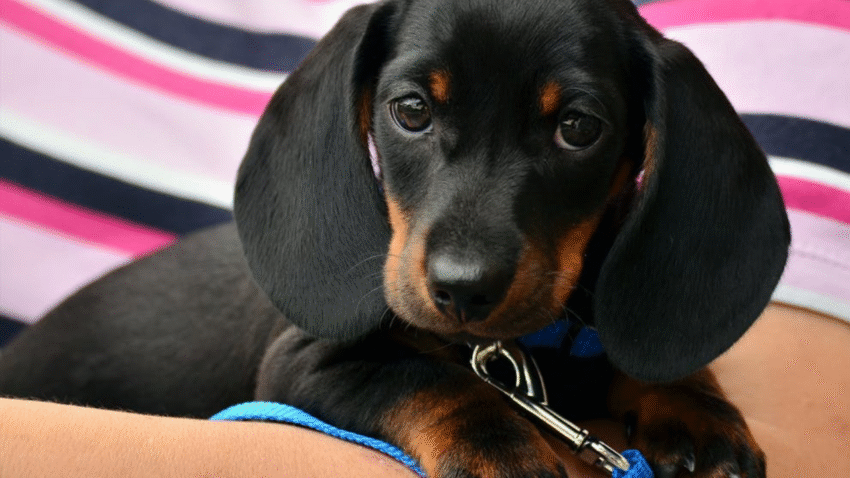Introduction
Want to teach your dog faster, with clearer communication and more fun? Clicker training is one of the most effective and rewarding ways to train your dog. Whether you’re teaching basic obedience, fun tricks, or solving behavior problems, learning how to use clicker training with your dog gives you a powerful tool to shape good behavior step by step. In this guide, we’ll explain what clicker training is, how it works, and exactly how to get started with your pup.
What Is Clicker Training?
Clicker training is a form of positive reinforcement training that uses a small handheld device—a clicker—that makes a distinct “click” sound. The sound marks the exact moment your dog does the right thing and is followed immediately by a reward (usually a treat).
Why it works:
- The click is precise and consistent, unlike your voice
- It helps dogs quickly associate specific actions with positive outcomes
- It builds clear communication and confidence
- It turns training into a fun, engaging experience
Clicker training is based on scientific principles of operant conditioning and is widely used by professional trainers and behaviorists.
Step-by-Step Guide to Clicker Training
Ready to get started? Follow these steps to teach your dog with a clicker effectively and safely.
1. Charge the Clicker (Create the Association)
Before you start teaching behaviors, your dog needs to learn that a click means a treat is coming. This is called “charging the clicker.”
How to do it:
- Sit with your dog in a quiet area
- Click the clicker, then immediately give a treat
- Repeat 10–20 times: click → treat, click → treat
- Don’t ask for any behavior—just build the association
After a few sessions, your dog will perk up or get excited when they hear the click. That means they understand the click means something good is coming.
2. Start with Simple Behaviors
Begin with something easy that your dog is likely to do naturally, such as sit.
Steps:
- Wait for your dog to sit
- The moment their bottom touches the floor, click
- Immediately give a treat
- Repeat several times
- Add the verbal cue “Sit” just before the dog performs the behavior consistently
You’re now reinforcing a specific behavior and pairing it with a cue.
3. Use the Click to Mark Desired Behavior
The click happens at the exact moment your dog does the behavior you want—not after. It tells your dog, “Yes, THAT was correct.”
Examples:
- Dog lies down → click → treat
- Dog touches your hand → click → treat
- Dog walks beside you → click → treat
The click is your bridge between the behavior and the reward. It’s not praise—it’s precise communication.
4. Shape Complex Behaviors with Successive Clicks
For more advanced tricks, use shaping—rewarding small steps toward the full behavior.
Example: Teaching “Roll Over”
- Dog lies down → click → treat
- Dog shifts weight to one side → click → treat
- Dog rolls onto side → click → treat
- Dog rolls all the way over → click → treat
This method builds behavior gradually and keeps your dog engaged and confident.
5. Fade the Clicker Gradually
Once your dog knows the behavior well, you don’t have to use the clicker forever.
How to fade:
- Start rewarding only the best or quickest responses
- Gradually replace the click with praise (“Good!”)
- Use treats less frequently, moving to variable rewards
Your dog will still respond to the verbal cue, even without the clicker.
Common Mistakes to Avoid
Clicker training is simple—but small mistakes can confuse your dog. Watch out for these:
1. Clicking at the Wrong Time
Timing is everything. Clicking too early or too late can mark the wrong behavior. Practice watching closely and clicking the instant your dog does the correct action.
2. Clicking Without Rewarding
Every click must be followed by a treat—especially early on. Clicking without rewarding breaks the trust and weakens the association.
3. Using the Click as a Recall Cue
The click isn’t a cue—it’s a marker. Don’t use it to call your dog to you. Instead, give a cue like “Come,” then click when they arrive.
4. Overusing the Clicker for Attention
Click only for specific, intentional behaviors—not just to get your dog’s attention. That dilutes the meaning of the click.
5. Using Poor-Quality Treats
Clicker training relies on motivation. Use small, tasty, high-value treats—especially for new or difficult tasks.
Extra Tips & Recommendations
Clicker training is incredibly flexible. Here are a few tips to make the most of it:
1. Use Short Sessions (5–10 Minutes)
Keep training sessions fun and focused. End on a success, not when your dog is tired or frustrated.
2. Practice in Low-Distraction Environments First
Start indoors, then move to more challenging places like the yard or park. This builds focus and reliability over time.
3. Use the Clicker for Daily Behaviors
Clicker training isn’t just for tricks! Use it to reinforce:
- Calm behavior during walks
- Sitting at the door
- Coming when called
- Not jumping on guests
The more consistent you are, the faster your dog will learn.
4. Carry the Clicker and Treats on Walks
Training can happen anytime. Be ready to mark and reward good behavior in real-life situations.
Conclusion
Clicker training is a fun, positive, and science-backed way to teach your dog just about anything. By marking the exact moment your dog does the right thing and reinforcing it with a reward, you create clear, consistent communication. Whether you’re working on basic manners or cool new tricks, the clicker helps you and your dog become a stronger, smarter team—one click at a time.
🐾 One click, one treat, one step closer to a well-trained pup.
🎯 Stick with us for more step-by-step dog training tips and tricks!
